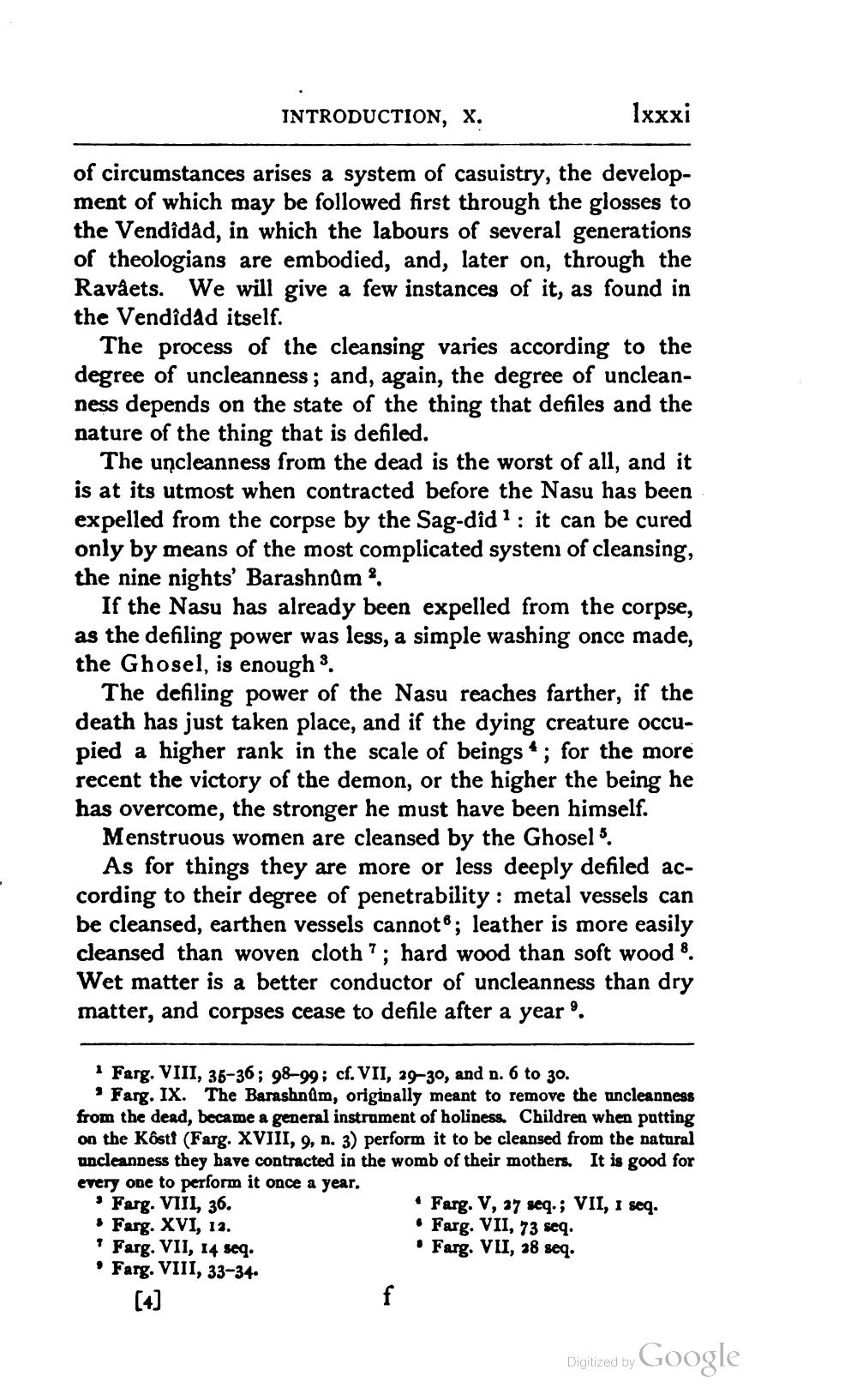________________
INTRODUCTION, X.
Ixxxi
of circumstances arises a system of casuistry, the development of which may be followed first through the glosses to the Vendidad, in which the labours of several generations of theologians are embodied, and, later on, through the Ravåets. We will give a few instances of it, as found in the Vendidad itself.
The process of the cleansing varies according to the degree of uncleanness; and, again, the degree of uncleanness depends on the state of the thing that defiles and the nature of the thing that is defiled.
The uncleanness from the dead is the worst of all, and it is at its utmost when contracted before the Nasu has been expelled from the corpse by the Sag-did ? : it can be cured only by means of the most complicated system of cleansing, the nine nights' Barashnam.
If the Nasu has already been expelled from the corpse, as the defiling power was less, a simple washing once made, the Ghosel, is enough
The defiling power of the Nasu reaches farther, if the death has just taken place, and if the dying creature occupied a higher rank in the scale of beings *; for the more recent the victory of the demon, or the higher the being he has overcome, the stronger he must have been himself.
Menstruous women are cleansed by the Ghosel".
As for things they are more or less deeply defiled according to their degree of penetrability: metal vessels can be cleansed, earthen vessels cannote; leather is more easily cleansed than woven cloth ?; hard wood than soft wood 8. Wet matter is a better conductor of uncleanness than dry matter, and corpses cease to defile after a year'.
Farg. VIII, 36-36; 98-99; cf. VII, 29-30, and n. 6 to 30. • Farg. IX. The Barashnum, originally meant to remove the uncleanness from the dead, became a general instrument of holiness. Children when putting on the Kösti (Farg. XVIII, 9, n. 3) perform it to be cleansed from the natural uncleanness they have contracted in the womb of their mothers. It is good for every one to perform it once a year. • Farg. VIII, 36.
• Farg. V, 37 seq.; VII, 1 seq. • Farg. XVI, 12.
• Farg. VII, 73 seq. ' Farg. VII, 14 seq.
• Farg. VU, 38 seq. • Farg. VIII, 33-34.
Digitized by
Digitized by Google




